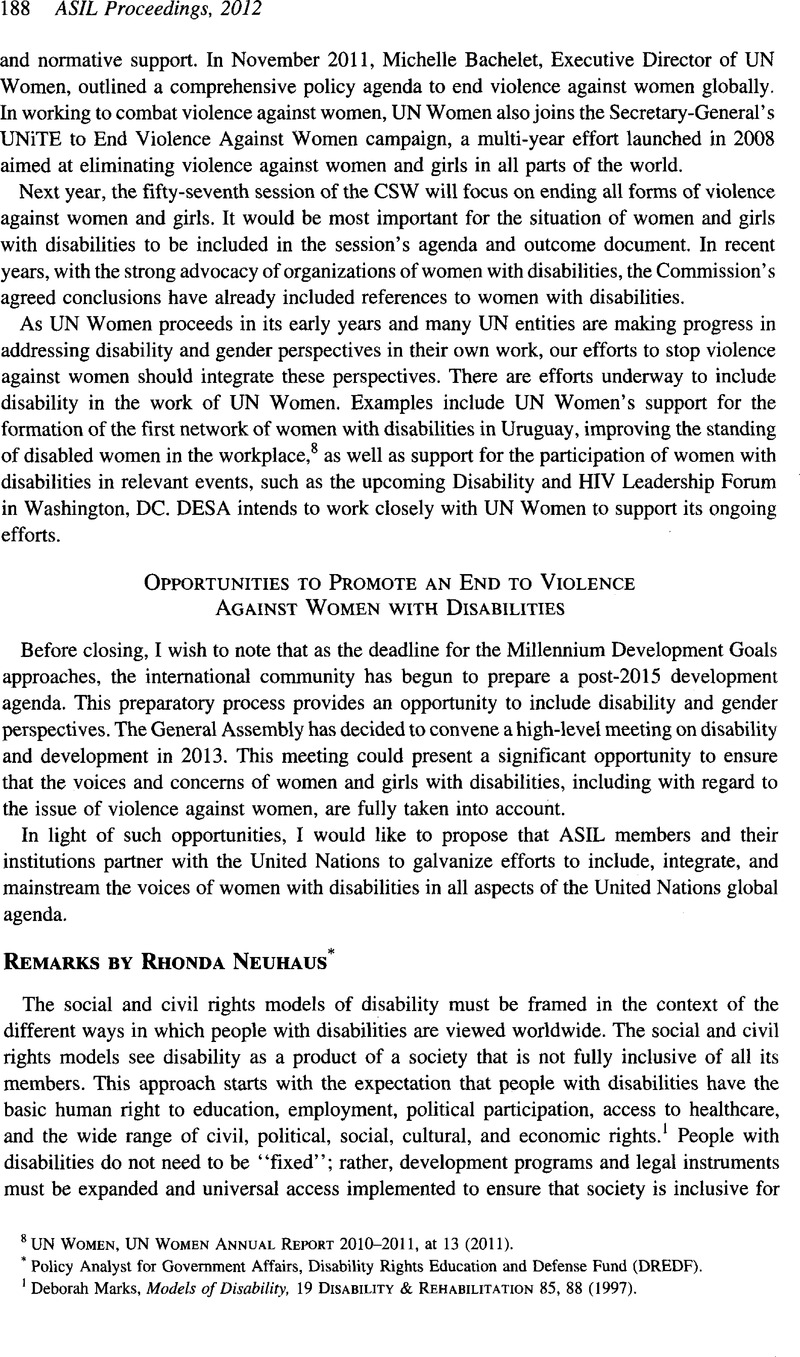No CrossRef data available.
Article contents
Remarks by Rhonda Neuhaus
Published online by Cambridge University Press: 28 February 2017
Abstract

- Type
- Forgotten Sisters: Violence Against Women with Disabilities—Human Rights Law and Complex Identity Status
- Information
- Copyright
- Copyright © American Society of International Law 2012
References
1 Marks, Deborah, Models of Disability, 19 Disability & Rehabilitation 85, 88 (1997)CrossRefGoogle Scholar.
2 Id. at 86.
3 Judy Panko Reis et al., It Takes More Than Ramps to Solve the Crisis of Healthcare for People with Disabilities 3 (Sept. 2004), available at http://www.tvworldwide.com/events/hhs/041206/PPT/RIC_whitepaperfinal82704.pdf.
4 Americans with Disabilities Act of 1990, Pub. L. No. 101-336, §12102, 104 Stat. 328 (1990).
5 Reis et al., supra note 3, at 13.
6 United Nations Enable, Guiding Principles of the Convention, http://www.un.org/disabilities/default.asp?-navid=16&pid=156 (last visited Nov. 9, 2012).
7 Centers for Disease Control and Prevention, Tracking Healthy People 2010, at 22 (Oct. 2011), available at http://www.cdc.gov/nchs/healthy_people/hp2010/hp2010_thp.htm.
8 National Council on Disability, United States Marine Corps Exceptional Family Members: How to Improve Access to Health Care, Special Education, and Long-Term Supports and Services for Family Members with Disabilities 7 (Nov. 28, 2011), available at http://www.ncd.gov/publications/2011/Nov28201l#toc6.
9 Id. at 48.
10 Id. at 45.


